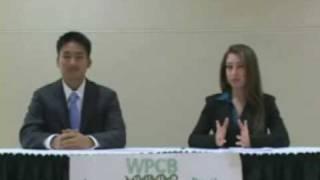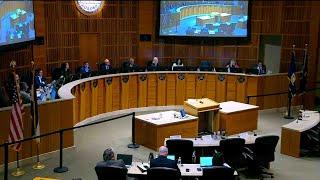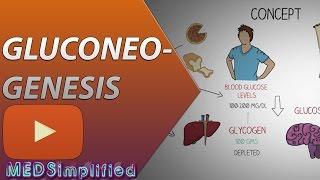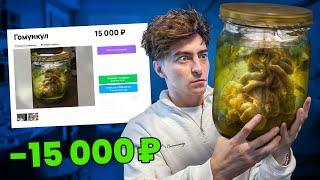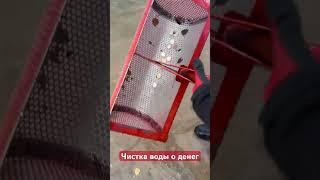
NanoNews - Part 1 of 2 - WPCB3063
USF Fall 2009 Genetics (PCB3063) Group Project
So often the presentation of mitosis and meiosis is more abstract and amorphous than concrete and essential. There is a lot of focus on the sequence of events (but no timescale) and very little in the way of mechanism—the how and why of the cell cycle. Of course, one can just as easily get bogged down in all the little details and lose track of what-in-the-world is going on. Unfortunately, The PMAT patchwork cell cycle most text books try to bore us to death with obscures the dynamic interconnectedness of life. Fertilization joins meiosis to mitosis. Fertilization is well suited to our purpose since the transition from haploid to diploid happens on a timescale of minutes and hours. (The acrosome reaction mentioned in the video takes around 12 minutes.*) Network news could not dream of a more conveniently timed story. When the action hits a low point, we shift back to the studio for analysis, background, and conjecture. A further benefit to this approach is that there are plenty of ways for things to go wrong—plenty of opportunities for suspense and drama. Most of what goes wrong during meiosis-to-fertilization-to-mitosis results in chromosomal abnormalities, usually nondisjunction, thus providing a mechanism for aneuplodiy--rather than an insistence that it really does happen.
Cast
S100 (Named after a class of proteins found in many cells, including neuronal support cells) One of the studio anchors.
cAMP (Named after an omnipresent cell signaling molecule that mediates many hormonal responses) The second studio anchor.
On anchors: Their main purpose is to provide structure and perspective. In some sense, they know too much. The peptide players have little concern for any reaction they are not involved in. Its the anchors job to speculate on big picture biology (evolution and genetics).
ZP3 (Named after a glycoprotein found on the oocyte's protective coating.) A field reporter responsible for reporting on the first stages of sperm-egg fusion.
GEN1 (Named after a human Holliday junction resolvase. A Holliday junction is an intermediate structure during recombination.) One of the experts. Affable and easy going, GEN1 thinks genetic variation is the primary goal of meiosis.
Cdc20 (Named after a cell division cycle regulatory protein.) Another expert. Precise but pompous, Cdc20 thinks every part of the cell cycle could use a bit more regulation.
Plk1 (Named after a Polo-like kinase responsible for regulating M-phase progression.) Plk1 knows a lot about the cell cycle—maybe too much. Excitable and prone to digressions, Plk1 likes nothing better than talking about mitosis.
References
Alberts, Bruce, Alexander Johnson, Julian Lewis, Martin Raff, Keith Roberts, and Peter Walter. Molecular Biology of the Cell, Fourth Edition. New York: Garland, 2002. http://www.ncbi.nlm.nih.gov/bookshelf/br.fcgi?book=mboc4
Brooker, Robert J. Genetics: Analysis and Principles. 3rd ed. New York: McGraw-Hill, 2009. http://books.google.com/books?id=nEiCPwAACAAJ&dq=Genetics:+Analysis+and+Principles
Fang, Guowei, Hongtao Yu, and Marc W. Kirschner. "The checkpoint protein MAD2 and the mitotic regulator CDC20 form a ternary complex with the anaphase-promoting complex to control anaphase initiation." Genes and Development 12 (1998): 1871-883. CSH Press. Cold Spring Harbor. Web. http://genesdev.cshlp.org/content/12/12/1871
Gerhart, John. Cells, embryos, and evolution toward a cellular and developmental understanding of phenotypic variation and evolutionary adaptability. Malden, Mass: Blackwell Science, 1997. http://books.google.com/books?id=JrATAQAAIAAJ&dq=Cells,+embryos,+and+evolution+toward+a+cellular+and+developmental+understanding+of+phenotypic+variation+and+evolutionary+adaptability
Gilbert, Scott F. Developmental biology. Sunderland, Mass: Sinauer Associates, 2000. http://www.ncbi.nlm.nih.gov/bookshelf/br.fcgi?book=dbio
*Harper, Claire V., Joanne A. Cummerson, Michael R. H. White, Stephen J. Publicover, and Peter M. Johnson. "Dynamic resolution of acrosomal exocytosis in human sperm." Journal of Cell Science 121 (2008): 2130-135. Journal of Cell Science. The Company of Biologists. Web. http://jcs.biologists.org/cgi/content/full/121/13/2130
Jones, Richard E. Human reproductive biology. Burlington, MA: Elsevier Academic, 2006. http://books.google.com/books?id=pfiZfui2XLIC&dq=Human+reproductive+biology
Monje-Casas, Fernando, Vineet R. Prabhu, Brian H. Lee, Monica Boselli, and Angelika Amon. "Kinetochore orientation during meiosis is controlled by Aurora B and the monopolin complex." Cell 128.3 (2007): 477-90. NIH Public Access. National Institute of Health. Web. http://www.ncbi.nlm.nih.gov/pmc/articles/PMC1808280/
West, S. C. "The search for a human Holliday junction resolvase." Biochemical Society Transactions 37 (2009): 519-26. PubMed.gov. Web. http://www.ncbi.nlm.nih.gov/pubmed/19442245
So often the presentation of mitosis and meiosis is more abstract and amorphous than concrete and essential. There is a lot of focus on the sequence of events (but no timescale) and very little in the way of mechanism—the how and why of the cell cycle. Of course, one can just as easily get bogged down in all the little details and lose track of what-in-the-world is going on. Unfortunately, The PMAT patchwork cell cycle most text books try to bore us to death with obscures the dynamic interconnectedness of life. Fertilization joins meiosis to mitosis. Fertilization is well suited to our purpose since the transition from haploid to diploid happens on a timescale of minutes and hours. (The acrosome reaction mentioned in the video takes around 12 minutes.*) Network news could not dream of a more conveniently timed story. When the action hits a low point, we shift back to the studio for analysis, background, and conjecture. A further benefit to this approach is that there are plenty of ways for things to go wrong—plenty of opportunities for suspense and drama. Most of what goes wrong during meiosis-to-fertilization-to-mitosis results in chromosomal abnormalities, usually nondisjunction, thus providing a mechanism for aneuplodiy--rather than an insistence that it really does happen.
Cast
S100 (Named after a class of proteins found in many cells, including neuronal support cells) One of the studio anchors.
cAMP (Named after an omnipresent cell signaling molecule that mediates many hormonal responses) The second studio anchor.
On anchors: Their main purpose is to provide structure and perspective. In some sense, they know too much. The peptide players have little concern for any reaction they are not involved in. Its the anchors job to speculate on big picture biology (evolution and genetics).
ZP3 (Named after a glycoprotein found on the oocyte's protective coating.) A field reporter responsible for reporting on the first stages of sperm-egg fusion.
GEN1 (Named after a human Holliday junction resolvase. A Holliday junction is an intermediate structure during recombination.) One of the experts. Affable and easy going, GEN1 thinks genetic variation is the primary goal of meiosis.
Cdc20 (Named after a cell division cycle regulatory protein.) Another expert. Precise but pompous, Cdc20 thinks every part of the cell cycle could use a bit more regulation.
Plk1 (Named after a Polo-like kinase responsible for regulating M-phase progression.) Plk1 knows a lot about the cell cycle—maybe too much. Excitable and prone to digressions, Plk1 likes nothing better than talking about mitosis.
References
Alberts, Bruce, Alexander Johnson, Julian Lewis, Martin Raff, Keith Roberts, and Peter Walter. Molecular Biology of the Cell, Fourth Edition. New York: Garland, 2002. http://www.ncbi.nlm.nih.gov/bookshelf/br.fcgi?book=mboc4
Brooker, Robert J. Genetics: Analysis and Principles. 3rd ed. New York: McGraw-Hill, 2009. http://books.google.com/books?id=nEiCPwAACAAJ&dq=Genetics:+Analysis+and+Principles
Fang, Guowei, Hongtao Yu, and Marc W. Kirschner. "The checkpoint protein MAD2 and the mitotic regulator CDC20 form a ternary complex with the anaphase-promoting complex to control anaphase initiation." Genes and Development 12 (1998): 1871-883. CSH Press. Cold Spring Harbor. Web. http://genesdev.cshlp.org/content/12/12/1871
Gerhart, John. Cells, embryos, and evolution toward a cellular and developmental understanding of phenotypic variation and evolutionary adaptability. Malden, Mass: Blackwell Science, 1997. http://books.google.com/books?id=JrATAQAAIAAJ&dq=Cells,+embryos,+and+evolution+toward+a+cellular+and+developmental+understanding+of+phenotypic+variation+and+evolutionary+adaptability
Gilbert, Scott F. Developmental biology. Sunderland, Mass: Sinauer Associates, 2000. http://www.ncbi.nlm.nih.gov/bookshelf/br.fcgi?book=dbio
*Harper, Claire V., Joanne A. Cummerson, Michael R. H. White, Stephen J. Publicover, and Peter M. Johnson. "Dynamic resolution of acrosomal exocytosis in human sperm." Journal of Cell Science 121 (2008): 2130-135. Journal of Cell Science. The Company of Biologists. Web. http://jcs.biologists.org/cgi/content/full/121/13/2130
Jones, Richard E. Human reproductive biology. Burlington, MA: Elsevier Academic, 2006. http://books.google.com/books?id=pfiZfui2XLIC&dq=Human+reproductive+biology
Monje-Casas, Fernando, Vineet R. Prabhu, Brian H. Lee, Monica Boselli, and Angelika Amon. "Kinetochore orientation during meiosis is controlled by Aurora B and the monopolin complex." Cell 128.3 (2007): 477-90. NIH Public Access. National Institute of Health. Web. http://www.ncbi.nlm.nih.gov/pmc/articles/PMC1808280/
West, S. C. "The search for a human Holliday junction resolvase." Biochemical Society Transactions 37 (2009): 519-26. PubMed.gov. Web. http://www.ncbi.nlm.nih.gov/pubmed/19442245
Тэги:
#Genetics #NanoNews #USF #Fertilization #Nondisjunction #Mitosis #Meiosis #Molecular #Biology #Oocyte #Spermatozoa #Cell #CycleКомментарии:
NanoNews - Part 1 of 2 - WPCB3063
Clever_Vulpini
City Council Meeting 9-9-24
The Aurora Channel
Top 10 Popular Kids Songs + More Nursery Rhymes & Kids Songs - CoComelon
Cocomelon - Nursery Rhymes
Gluconeogenesis Pathway Made Simple - BIOCHEMISTERY
MEDSimplified
Ford F-150® 4x4 and Drive Modes | Ford How-To | Ford
Ford Motor Company
FORD messed up with the 2025 F-150!
TCcustoms
Ford F-150 Trucks to Avoid
Everyman Driver
